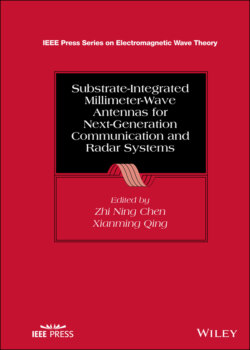Читать книгу Substrate-Integrated Millimeter-Wave Antennas for Next-Generation Communication and Radar Systems - Группа авторов - Страница 13
Preface
ОглавлениеMillimeter‐wave technologies have a long history. In early 2000, the topic became hot again due to the unlicensed 60‐GHz wireless communications for short‐range links (later IEEE 802.11ad). As antenna researchers we thought how we can contribute to the research and development of the new wave of millimeter‐wave systems. After the comprehensive study of the unique challenges of antenna design at millimeter‐wave bands, we decided to focus on three issues: loss control, integration, and testing setups. Since 2008 we have conducted the loss analysis of all designs and proposed technologies to control the losses caused by materials, surface waves, and feeding structures. We have explored almost all ways to integrate the antennas and arrays into a variety of substrate from printed circuit board (PCB), low‐temperature co‐fired ceramic (LTCC), to integrated circuit package (IC package). We also configured and built up three measurement systems to test the impedance, radiation pattern, and gain of the antennas from 60 GHz to 325 GHz. Our works have been widely recognized with tens of papers published in prestigious journals, filed patents, and completed industry projects.
With the deployment of millimeter‐wave technology in 5G, the research and development of antenna technologies at millimeter‐wave bands are fast advancing to industry applications. The technologies we developed for alleviating fundamental challenges should have more opportunities to be further developed and applied.
The major contents of the book stem from the works of millimeter‐wave antennas in the past decade when the editors as well as the authors worked in Institute of Infocomm Research (I2R), Singapore. The relevant research and development were fully supported by Agency for Science, Technology and Research (A*STAR).
The team has worked hard to complete this project in a short duration. All authors would like to appreciate their colleagues as well as their family members for their generous support when they were preparing the manuscripts, in particular, during the COVID‐19 period.
Zhi Ning Chen, National University of Singapore
Xianming Qing, Institute for Infocomm Research, Singapore
